Are you surprised why this question is even being asked in the first place? We have had product management in the industry for a long time now. Proctor & Gamble pioneered the concepts of brand management and market research (“Find out what the customer wants and give it to them.“). The importance of the role was further legitimized at HP and at Apple, where Steve Jobs was the uber Product Manager (“It’s not the customer’s job to know what they want. Customers do not know what they want until you give it to them.“)
With such a storied legacy of Product Management, why this question now?
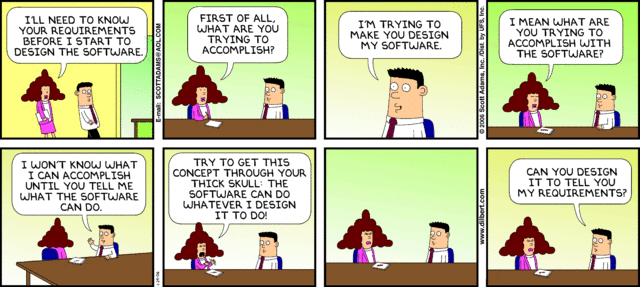
In our work at the Institute of Product Leadership, working with clients and product professionals across different continents, I get varied answers to this question. These answers can be categorized into following buckets:
- Location: Sits between all the other functions in the company
- Mathematical: Three circle Venn diagrams that show product management at the sweet intersection of customer, technology and business. Sometimes UX is thrown into one of the circles.
- Responsibilities: Mini-CEO of the product, or at times the term product janitor is used depending on how the week has gone 🙂 – but people talk about what a product manager does – understanding customer requirements, working with engineering to get the product built, defining the roadmap, working with marketing and sales, defining strategy.
- Direction: – Inbound and Outbound. Bringing customer and market insights INTO the organization, and bringing the product OUT TO the market. People most commonly describe Product Management as inbound and Product Marketing as outbound.
None of these answers are wrong by the way.
They are all valid descriptions about product management and what product managers do. What bothers me is that this question is not answered with any consistency. Isn’t it about time we should be able to do that?
THE PRODUCT LEADERSHIP TEST
I also find that people working on the same product do not have consistent answers to three important questions.
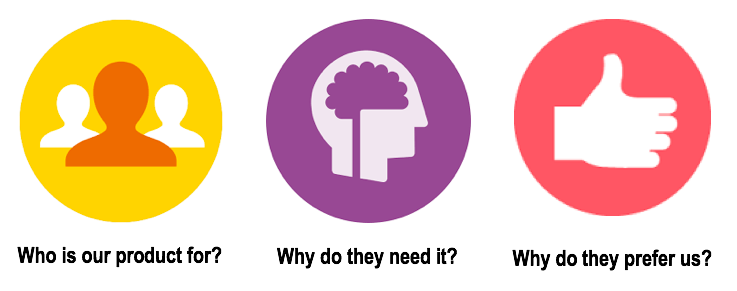
It is like the six blind men and the elephant.
The answer to the first question – Who is our product for – does not have too many variances, especially if the product has been in the market for a long time. Customers and users are known, at least minimally by demographic attributes, titles, even if the personas may not have been formally defined, e.g. our customers are hospitals in the US, and our ERP solution is used by hospital administrators.
With the second question – Why do they need it – answers start diverging. This is an indication that the customer’s needs, challenges, expectations are not well understood by the product team, except for only a few people. People are well informed about what the product does, but not why it is needed. So this answer comes in the form of product features and not customer problems, e.g. Hospital administrators need an ERP system to track patient registration, accurate billing, manage patient records, faster information flow between various departments, track purchasing and inventory, etc. But these are not specifically the challenges of the hospital administrators, which may be better expressed as – facing a shortage of skilled healthcare workers, ensuring high patient satisfaction with their experience in various hospital departments, ensuring high quality of outcome and care, keep up with advances in medicine, technology and government regulations, etc.
With the third question – Why do they prefer us – there are even more variances. Engineers believe their product is far superior because of the latest technology and features. Marketing believes the messaging of the product resonates better with customers. Sales believes they have built long standing relationships with customers because of which customers are willing to look beyond some deficiencies in the product.
If we have to be an optimal product team, we must have consistent and complete understanding of the customer, what they are trying to achieve for which they select our product, and why do they prefer our product over the alternatives. This understanding is not just for a few people, but must percolate across the entire product team.
DEFINING PRODUCT MANAGEMENT
Fundamentally, our goal is to build the right product for the right customer and be profitable.
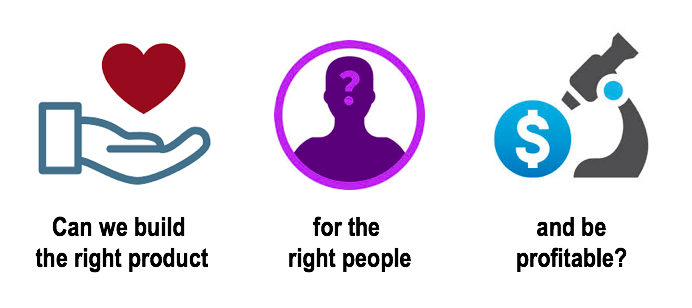
At the Institute, we have a very specific definition of what is Product Management. We anchor this definition around the word VALUE. This word, VALUE, keeps popping up a lot in our work – we define value propositions, customers expect value for money, we talk about customer lifetime value, and so on.
So it makes sense to drill down on this word and understand how VALUE is managed. As a product team, we go through five distinct steps in this process.
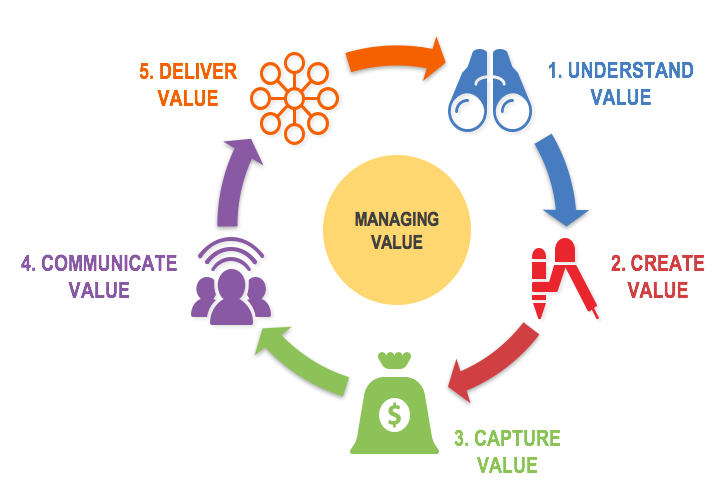
In interacting with customers and learning about their challenges and problems, their expectations, and validating potential solutions, we UNDERSTAND VALUE.
When we define the product, prioritize capabilities, and define a roadmap, we CREATE VALUE.
We understand the customer’s willingness and ability to pay, make strategic decisions about pricing and packaging. We look to CAPTURE VALUE.
We articulate the value proposition in a compelling manner, create the right messages to position the product. We COMMUNICATE VALUE.
We define routes to market, enable sales and channels to sell the product, and support to help customers. We DELIVER VALUE.
So there are five steps in this process of MANAGING VALUE:
- UNDERSTAND VALUE
- CREATE VALUE
- CAPTURE VALUE
- COMMUNICATE VALUE
- DELIVER VALUE
Product Management is hence Value Management.
Product Management is a process by which a product team (and not any one individual called the product manager) manages value as it builds the right product for the right customers and becomes sustainable as a profitable business over time.
Product Management is not just the Product Manager’s job. While Product Management is a function on an org chart, first and foremost it is a discipline and a process, which we call the Productizing Process, and the entire product team is part of this process. As a result of having this consistent process, everyone in the product team should be able to take the three question Product Leadership test and answer questions consistently.
The Product Manager is the master orchestrator of this process of managing value.
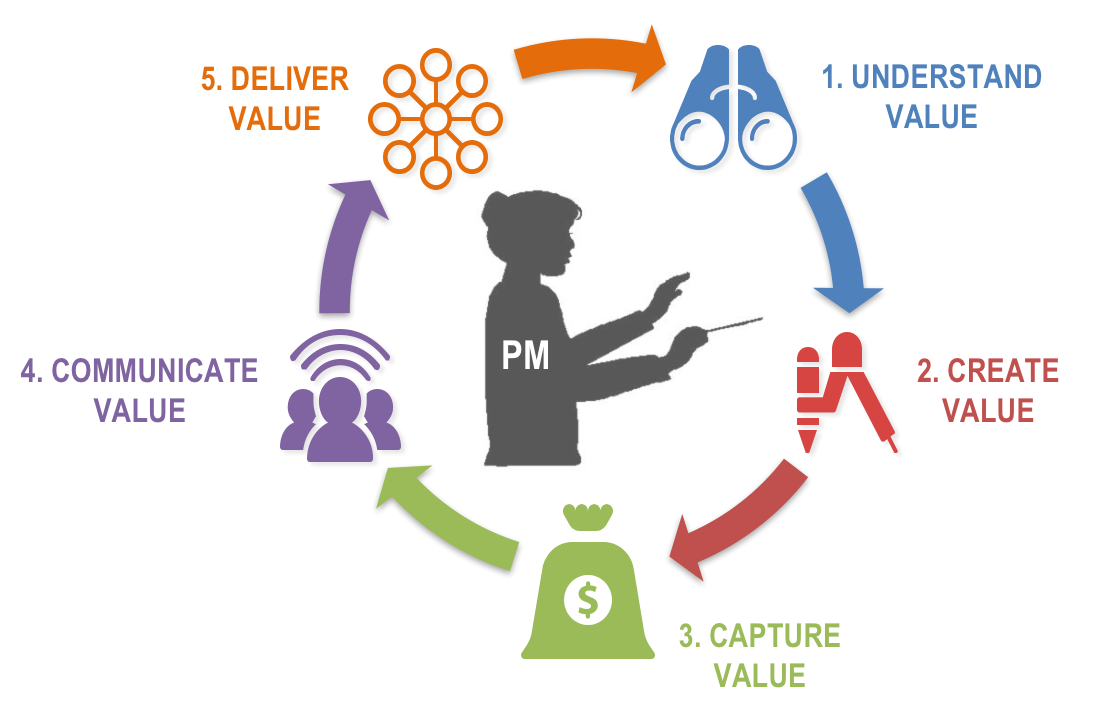
We product managers are certainly responsible for understanding our customers and the market to the nth degree. But we do not write code. We certainly have a huge say in what and how the product gets built. We may or may not set pricing, but we definitely need to understand and influence it. We do not create the catchy tag lines nor the glossy visuals, or run the lead generation campaigns that marketing is so good at. We also do not carry a quota for selling the product. There are experts in the company for every aspect of building and selling a product. But the buck stops with the Product Manager as far as the success of the product in the market is concerned.
PRODUCTIZING PROCESS FRAMEWORK
Products becomes successful when significant positive value is created for customers, and they prefer it overwhelmingly above any other alternative available to them. And it is our job as product managers to manage the process by which we create successful products, rolling up our sleeves and being the product CEO or the product janitor, whatever it takes.
In order to do this well, we have defined a framework with a set of 25 competencies across the Productizing Process – encompassing Market Analysis, Strategic Planning, Product Planning, Go to Market, and Sales Enablement.
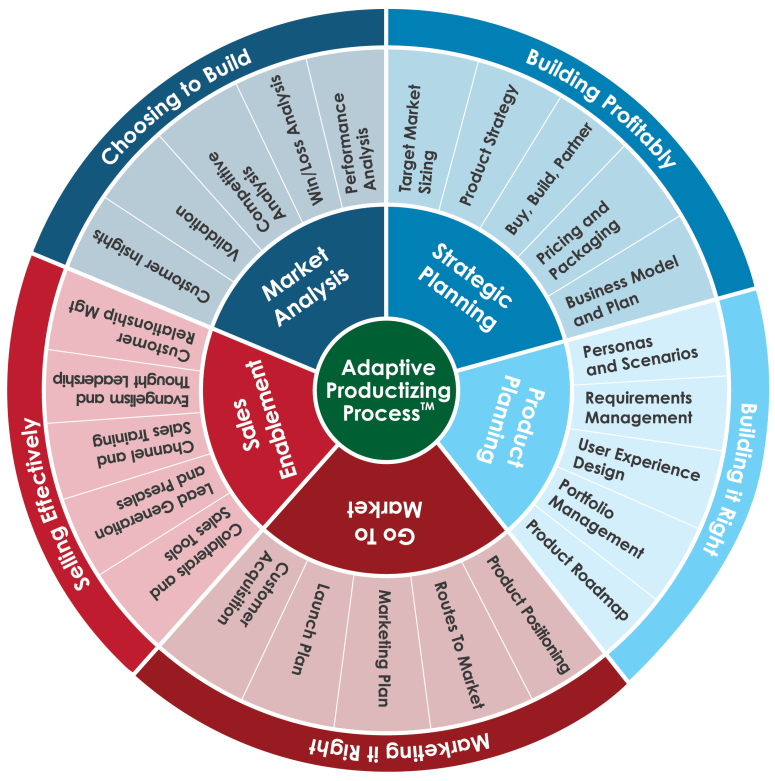
Acquiring these competencies and the associated mindset of a Product Leader are critical to be successful in whichever role we play in the product team – whether as a Product Manager, Product Marketing Manager, Engineer, or QA.
PRODUCT MANAGEMENT FUNDAMENTALS
The Institute just recently launched an online course called “Product Management Fundamentals” where we discuss this in more detail, along with other important topics such as the competencies for successful product management, roles and responsibilities and product management career paths. It is free for a limited time, so if you’d like to check it out, follow the link above and tell us what you think.
And from now on, lets have a consistent answer to the question – What is Product Management?
Product Management is a process by which a product team manages value as it builds the right product for the right customers and becomes sustainable as a profitable business over time. The Product Manager is the Master Orchestrator of this process of Product Management.
Thanks for reading! What do you think?

One thought on “What IS Product Management, really?”